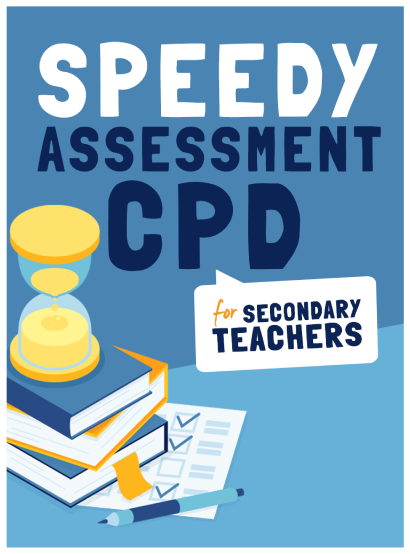Whole Class Feedback – How can we stop individual students tuning out?

Dr Andrew Atherton explains how a teacher’s use of Whole Class Feedback can and should include space for issuing comments and observations to individual students

What’s not to love about Whole Class Feedback? It promises significant reductions in teacher workload, whilst at the same time actually improving student outcomes.
And yet, it seems that as a profession, we’re only ever a couple of steps away from taking a superb idea and lethally mutating it, to use Dylan Wiliam’s turn of phrase. And Whole Class Feedback is no exception.
A certain antipathy
One potential pressure point is that we become too committed to the idea that Whole Class Feedback absolves us from offering any kind of individual or personalised feedback.
The real benefit to Whole Class Feedback is the manner in which it allows us to identify and address patterns of misconception across the class, while offering a series of actionable next steps or a task for everyone to complete. None of that will matter, however, if students aren’t receptive to the feedback they’re being offered. The worst feedback, no matter how good, is that which goes ignored.
While every class and context will be different, it’s conceivable that if we adhere too stringently to the idea that Whole Class Feedback should only ever issued to the whole class, then the individuals within that class may feel a certain antipathy.
Pedagogically sound though it may be, students – indeed, anyone – will want to know they’re valued not as a collective, but as individuals. The risk with using Whole Class Feedback is we forget the need for individuals to act on and attend to feedback, even when that feedback is delivered to the whole class.
We therefore need to strike a balance between retaining the pedagogic efficacy of Whole Class Feedback – thus preserving those significant workload benefits – and building in some mechanism for ensuring individuals see the feedback they’re given not as some vague homogeneity, but something that attends to them specifically.
The right tone
Here are two simple, yet effective ways of doing this:
Strategy 1 – Blue highlighter
When reading and marking work from my classes, I’ll always keep a blue highlighter to hand and use it to quickly flag anything I like or find especially interesting. I’ll do this for every individual student, since there’s always something to value. When I return the students’ work, I’ll ask them to read it back and pay particular attention to the parts highlighted in blue.
I’ll then ask them to imagine that every instance of blue highlighter is me sat at my desk, emitting some kind of congratulatory noise or uttering ‘Excellent’ or ‘Good point’. This reinforces that I’ve enjoyed and paid close attention to their work – important for setting the right tone in feedback lessons – while also providing opportunities for significant metacognitive benefit.
Students can now ask themselves, ‘Why is this highlighted blue? What am I doing well here? Are there any patterns across what’s highlighted blue?’ It’s a great way of encouraging students to think deeply about their own work, whilst showing them a certain degree of individual attention – all at no extra cost to me.
Strategy 2 – Defining excellence
When offering comments on what went well across the class, I’ll pepper my explanations with specific student examples. To do this, I might live model under the visualiser something I noticed and jotted down when reading a piece of work, talking the class through exactly why I made a note of it.
Again, I’m demonstrating a level of attention to the individual. The process produces real moments of pride when a student’s work is chosen as an exemplar, but I’m also modelling what excellence looks like to the rest of the class, so the other students can better emulate it themselves.
Both strategies, as well as many others I could have chosen, have the same aim. We shouldn’t see Whole Class Feedback as synonymous with offering no feedback at the level of the individual. Rather, we should find ways of attending to individual students whilst still retaining the core pedagogic innovations of Whole Class Feedback.
Dr Andrew Atherton is a secondary school English teacher; his ‘Codexterous’ website offers a range of articles and resources for English teaching and he tweets as @__codexterous











